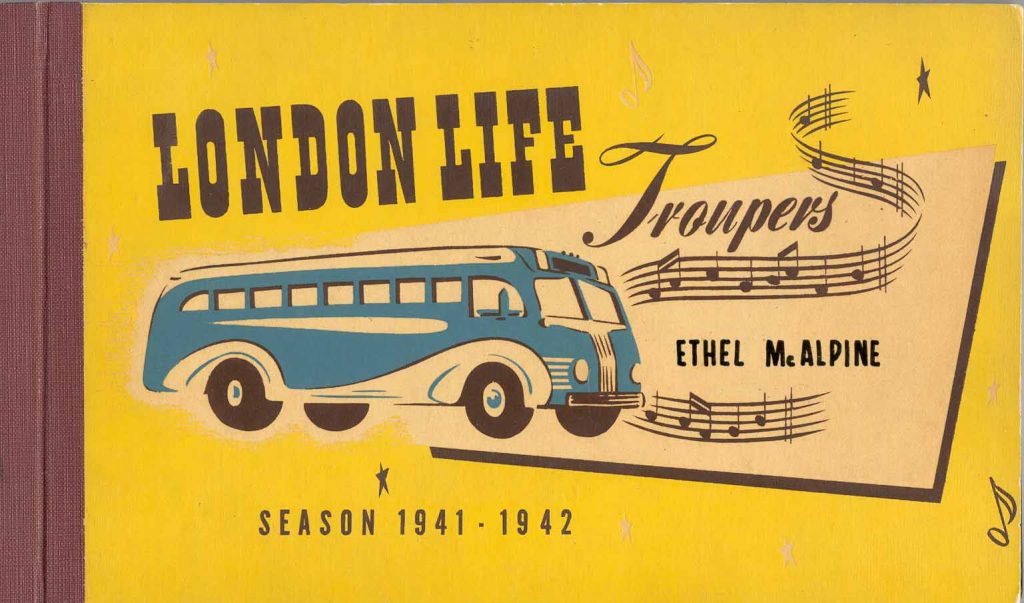London at War, 1939-45
London just before WWII
The London, Ontario of 1939 was a major stop on the road between Detroit and Toronto. The city was a train hub for freight and passenger service. It was located between two booming summer communities, and it had a vibrant nightlife. Dance halls and pavilions boasted big bands and ensembles, as well as dance troupes and jazz performers. Theatre of all types was popular, and the art scene was beginning to boom.
Victoria Hospital, one of London’s best hospitals, became a major training ground for doctors and nurses. It was a hotbed of international medical research and pioneering breakthroughs. There was also a lot of research being done at the expanding University of Western Ontario. The University now attracted young students from all over the country to study the liberal arts and the sciences.
Despite the Great Depression of the 1930s, London’s manufacturing industry continued to produce. Factories churned out machinery, parts, and consumer goods at a surprising rate. By 1939, much of the city’s wealth had returned.
England declared war on Germany on September 3, 1939. Canada declared war on September 10, and this declaration changed both the social and economic lives of the nation. London, which had a long history as a military and entertainment centre, did well with the influx of service men and women.
Many businesses in and around London completely changed their production lines during the war. Tailors sewed uniforms instead of suits and dresses. Factories that produced radios and TVs now produced anything from explosives to voltmeters and high-tech radio equipment. Everyone did their part to help the war effort.
Companies like Sparton of Canada, which manufactured radios and household appliances prior to the war, were contracted by the government to produce parts for radar detection. Their production was vital to Canadian efforts with radar technology. Post war Sparton continued to manufacture parts for radios and later stereo equipment.
Sparton of Canada
April 15, 1958
Dear Margie,
It’s that time of year again — reunion time! I can’t believe it’s been 13 years since our time at Sparton of Canada. More than a decade on, and I still have no idea what we were building some of that stuff for. Some of it looks a lot like the radio bits and bobs that Harry has in the basement — you know, voltmeters, ammeters, and other gizmos.
Anyway, I’m helping arrange the party this time around. It’ll be nice to see some of the girls again. I kind of miss being part of the workforce. Trying to find nearly 500 people is really hard. A lot of the girls got married after they left, so lots of new last names.
I do remember in ‘43 when they changed things around on the factory floor. Apparently it was for some big military contract, something about using a bunch of antennas to locate radio signals. Harry says that it sounds like HF/DF (“huff duff”), or High Frequency Direction Finding. The military does like its short forms.
Did you know that before the war Sparton was just the Canadian arm of the Sparks Withington Co. in the States? They made radios and other electronic things. Makes sense why they converted the factory to manufacture radio things. Harry says they even tried making televisions after the war; too much competition though. We have one in our living room now that shows colour!
Speaking of which, Harry is working at Sparton now making car horns. Isn’t that wild? Says they put them in Studebakers, Chryslers, and some American Motors cars. He might be switched over to making something called sonobuoys for the navy. And last I heard Dot and Helen and a few of the other gals are still working there. They kept on a lot of the women after the war unlike so many other factories.
Do you still have any of those records they pressed for Columbia? Strange how Sparton kept making those all throughout the war. I guess the new music made people a bit happier. You should bring some of them to the reunion.
We don’t have the venue booked yet, but the reunion will be the last weekend in August. I can’t wait to see everyone again.
Yours truly, Diane
[A fictional note between friends based on archival materials from the Secrets of Radar Museum]



